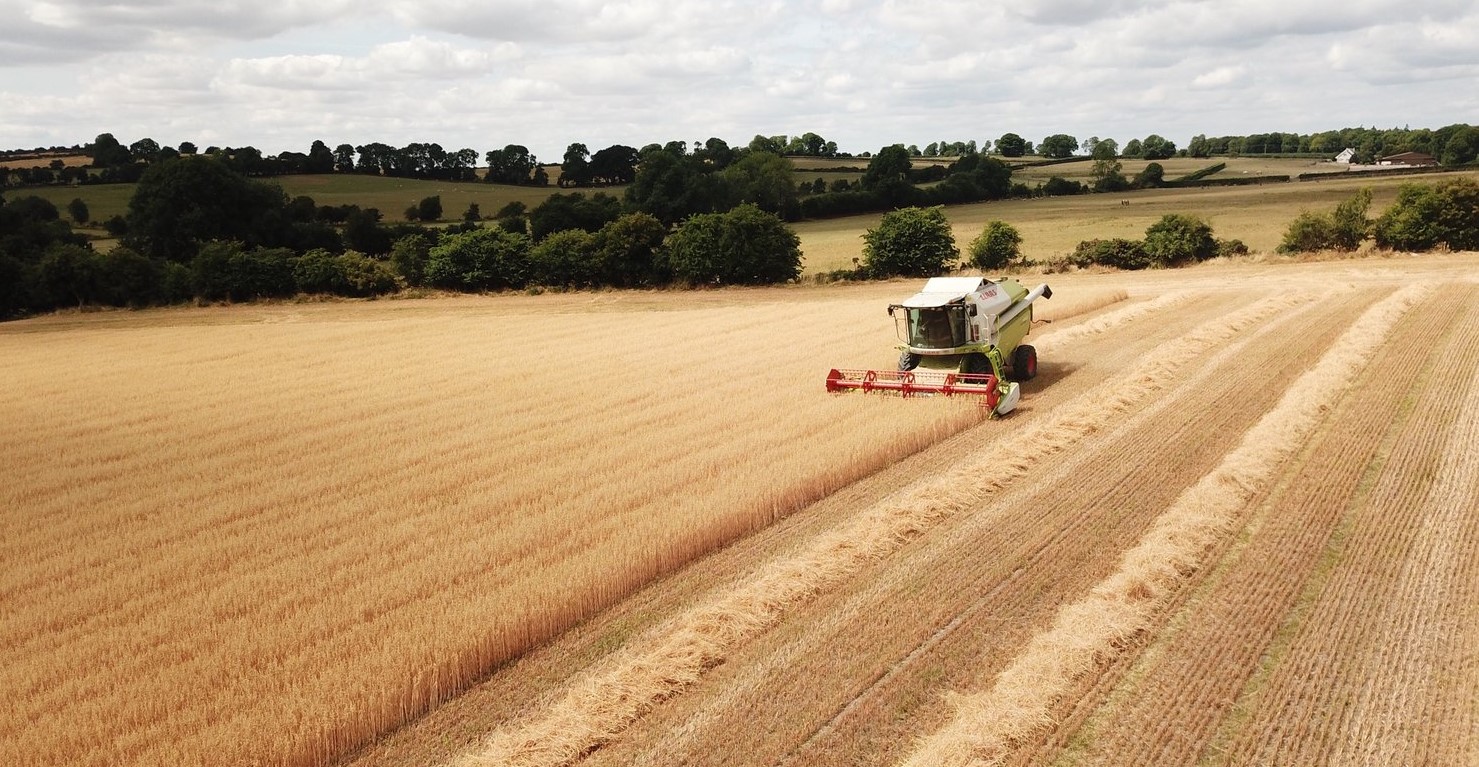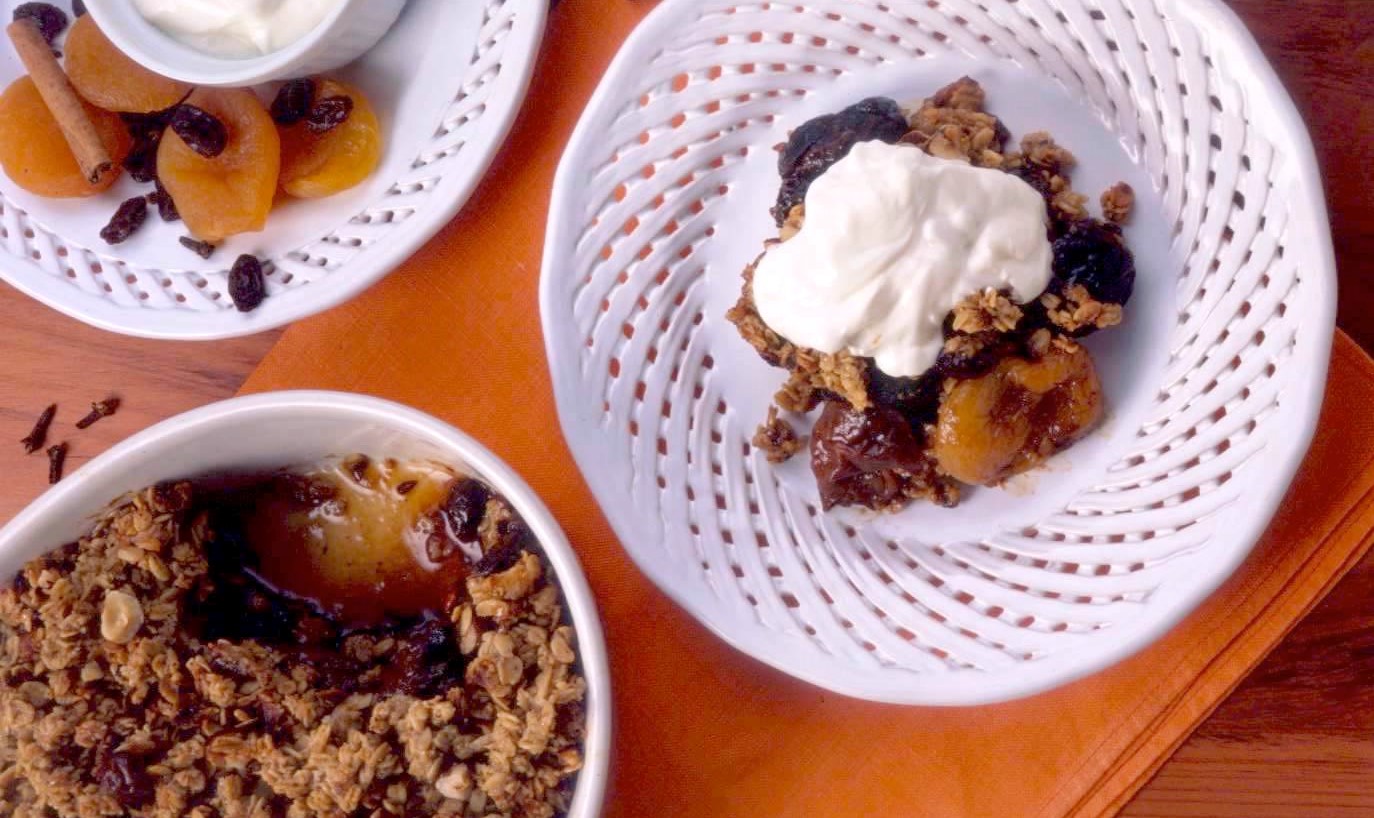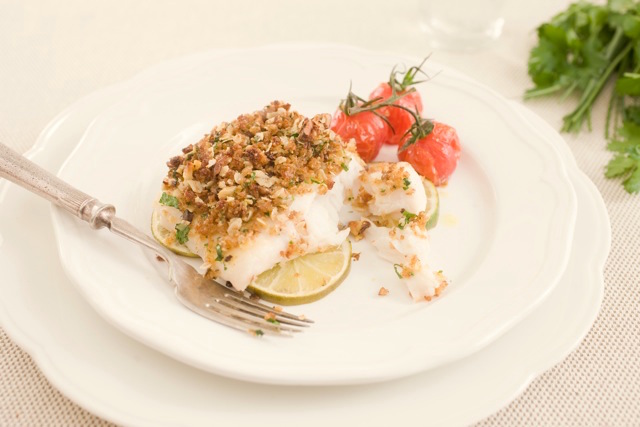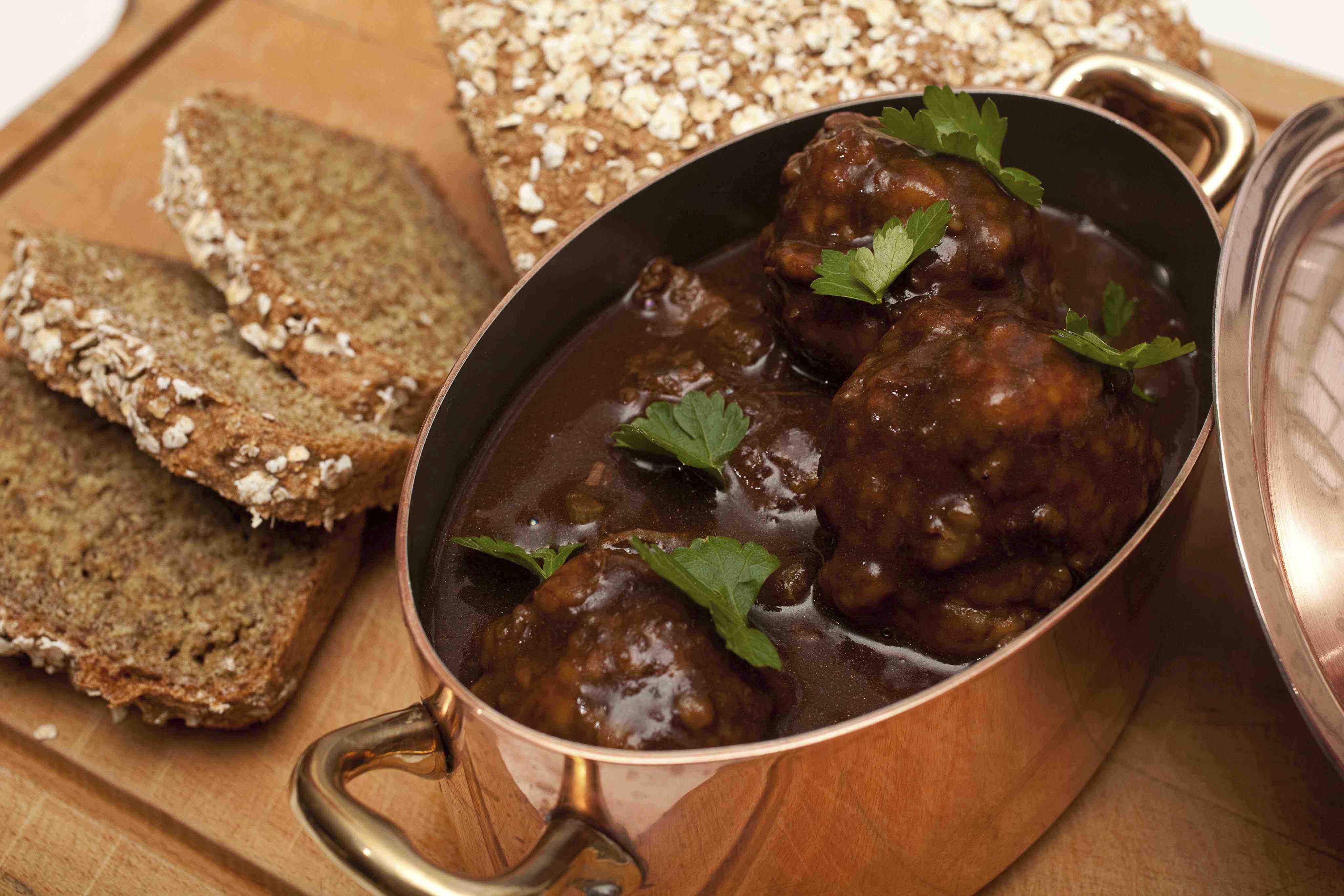Cookery Feature - Making More Of Oats

New year, new start - as good resolutions go, you couldn’t do better than resolve to eat more Irish oats. And it couldn’t be easier, or more reasonably priced, so there’s no excuse. The health benefits of oats - including lowering cholesterol - are now well understood and, while it’s an all year product with many uses (see Recipes, below) porridge is the favourite comfort dish to start the day in the colder months. It’s the perfect health breakfast, providing warmth and slow-release energy throughout the morning – ideal for school children, and just about anyone really, especially if taken with a glass of fresh orange juice because the vitamin C in the juice helps the body to absorb the iron in oats. And – good news for dieters - breakfast eaters are less likely to be overweight, as it is less tempting to snack on high calorie foods mid-morning or over-eat at lunchtime.
There are plenty of delicious oats to choose from, with Flahavans the go-to brand for most Irish shoppers. This 7th generation family-run mill has been operating in Kilmacthomas, Co Waterford for over 200 years, making it one of Ireland's longest-running family businesses - and one that has always been operated sustainably. All of their standard oats are produced in Ireland, and they actively encourage more Irish organic oat production to meet the growing demand. Over a million servings of Flahavan's porridge are consumed nationwide each week, apparently, and it is available in a variety of options including Progress, Organic and Real Fruit Porridge ranges and the convenient Quick Oats range. Ever innovative, they also offer a growing range of other oat products, including biscuits, snacks and oat milk drinks.
Macroom Oatmeal is another brand with a long history - it was established in 1832 and the current producer of their famous stone-ground oatmeal, Donal Creedon, is a descendant of the original owners. It has a great following and has been championed by the Allen family at Ballymaloe House for many years. Some other thriving Irish brands are run by growers who have supplied Flahavans as well as producing their own ranges. Pat Lalor, for example, whose Ballard Organic Farm in Westmeath has been owned and operated by the Lalor family since 1844, now produces the very successful Kilbeggan Organic Porridge - and some growers are now also milling. The Scully family at The Merry Mill in Co Laois, for example, produce organic and gluten-free oatlets and oat flour, all of which is grown and stoneground on site - as are the stoneground flour and porridge oats (among other grains) grown and milled and James Kelly of Ballymore Organics in Ballymore Eustace, Co Kildare. Other small producers, many of them organic, are becoming better known all the time and it’s encouraging to see the sector growing and thriving - something that recent moves towards supporting sustainable farming should help.
EASY PEASY PORRIDGE
We cook our porridge overnight and it couldn’t be easier: one cup of oats to three of water and a pinch of salt; leave overnight in a slow cooker or the slow oven of a range type cooker. If slow cooking doesn’t suit you, this quick 3-MINUTE PORRIDGE for 2 can be prepared on the hob or in the microwave. [Tip: Cooking time can be reduced by soaking the oats in the water overnight.]
Conventional Method: In a saucepan, stir 1 cup oatles (or similar) and a good pinch of salt into 2.5 cupfuls cold water/milk or mix of both. Bring to the boil and cook briskly for 3 minutes or until thick and creamy. Flavour if desired and serve.
Microwave Method: In a deep bowl, stir 1 cup oatles (or similar) into 2 cups of water. Place in microwave, but do not cover; cook on High for 2.5 - 3 minutes. The cooking time will depend on the power of the microwave (2.5 mins for 800w or 3 mins for 650w). Leave to stand for 1 minute, stir and serve.
But oats are not just for breakfast… Oats are the key ingredient in so much of our much-loved baking repertoire (breads and scones, cookies, flapjacks, the list goes on…) but they’re really versatile in general cooking and they work especially well in recipes that suit the Irish climate, including many of our traditional dishes.
RECIPES TO TRY:

DRIED FRUIT & HAZELNUT CRUMBLE
Dried fruit and nuts are complementary ingredients that make a natural partnership with oatmeal - as in this hot pudding that's as delicious as it is wholesome. This recipe goes back to the 1990s, when the Health Promotion Unit at the Department of Health and Children asked members of the Irish Food Writers’ Guild to contribute a recipe to their Healthy Food magazine, which was a great combination of healthy eating and exercise guidelines, news and favourite dishes. Time to bring it back, perhaps. Serves 4-6
9oz/250g mixed dried fruit salad, e.g. pears, peaches, apples, prunes.
2oz/50g sugar, or to taste
Natural apple juice or water, as required
1 inch/5cm piece cinnamon stick
Grated rind and juice of 1 small lemon
Crumble Topping:
7oz/200g oat flakes
Pinch of salt
3oz/75g butter, melted
3oz/75g Demerara sugar
1 level tsp. mixed spice (optional)
2oz/50g hazelnuts
A few tbsp. water
The day before cooking, put the fruit into a pan with the cinnamon stick, sugar and enough apple juice or water to cover. Bring to the boil, then remove from the heat, add the finely grated lemon rind and the juice, cover and leave to soak overnight. (If you don’t have time for overnight soaking, use this microwave short-cut: in a Pyrex jug bring all to the to boil on High, then reduce to Low and microwave for 15-20 minutes or until fruit is plump and juicy).
Preheat a fairly hot oven 200°C/400°F/Gas Mark 6.
Butter a shallow baking dish.
To make the topping, put all except the last two ingredients into a mixing bowl and mix well. Mix a little water into the crumble mixture, so that it clings together slightly, then mix in the roughly chopped nuts.
Remove the cinnamon stick from the fruit, check prunes, etc., for stones, then arrange dried fruit on the base of the dish, with the juices.
Large pieces, e.g. half pears or peaches, may be cut to bite size if you like.
Scatter the topping over the fruit and bake in the pre-heated oven for 30-40 minutes, or until well-browned and crunchy on top.
Serve hot with chilled natural yogurt, whipped cream or ice cream.
NOTE: A mixture of oatmeal and wholemeal flour (or all wholemeal flour) may also be used. If using pre-soaked ‘ready to eat' dried fruit, less water is absorbed, judge liquids by appearance - the fruit base should be nice and juicy.

HERB AND OAT CRUSTED HAKE FILLETS
A crispy crust can be the making of a succulent fish dish and this simple recipe, which was developed by Neven Maguire for Flahavan’s Progress Oatlets, is a good one to try. You could also use cod, salmon, haddock or monkfish instead of the hake. Serves 4
4 fillets of hake, skin on
75g (2½ oz) melted butter
a litlle each of grated nutmeg and orange zest
4 slices wholemeal bread
3 tbsp chopped fresh mixed herbs (eg. parsley, chives, thyme)
25g (1 oz) walnuts, toasted and chopped
75g (2½ oz) oatlets
1 egg yolk, beaten
2 limes, sliced (or lemons)
4 small vines of cherry tomatoes (4-5 tomatoes per vine)
Fresh seasonal vegetables or salad to serve.
Melt butter in a saucepan, grate in some nutmeg and add the orange zest.
In a blender, blitz the brown bread to make breadcrumbs.
Mix the breadcrumbs, herbs, walnuts, oats and butter mixture in a bowl to make the herb and oat crust.
Coat the flesh side of the hake with the beaten egg yolk.
Put the herb crust on top of the egg yolk and press into the fish.
Make a bed of lime slices on a parchment lined baking tray.
Place the coated fish (skin side down) on the bed of lime slices.
Bake at 200?C (400°F/Gas mark 6) for 15-20 minutes, with the cherry tomatoes.
When the fish is cooked through and the tomatoes are lightly charred, serve with the lightly cooked seasonal vegetables, or salad.

TRADITIONAL BEEF CASSEROLE WITH OAT DUMPLINGS
A nourishing family meal, especially in the cold winter months, this comforting stew will look after itself for an hour or two during the long slow cooking som it is very little trouble to make. It was developed for Flahavans by Kevin Dundon who has a soft spot for the dumplings - which are best made at least 30 minutes before needed and kept in the fridge until required.
[Note: Instructions are for cooking this stew on the hob but, if a flame-proof lidded casserole such as Le Creuset is used, it could also be transferred to a moderate oven approx 160C/140C fan/gas 3, if preferred, after the initial mixing and cooking of ingredients on the hob. GC] Serves 6
Casserole:
700g/ 1lb 8oz lean stewing beef, cut it into small chunks
1 medium onion, sliced
2 carrots, peeled and diced
½ turnip, chopped into small dice
1 parsnip, peeled and chopped
2 sticks celery, diced
25g/1oz/2½ tablespoons plain flour
1 large teaspoon tomato purée
850ml/1½ pints beef stock
Herb Dumplings:
200g/7oz self raising flour
2oz/50g oatlets
50g/ 2oz suet
Pinch of salt
½ medium onion, very finely diced
2 teaspoons freshly chopped parsley
3½ floz/75ml soured milk (approx)
Optional: a little grated cheddar cheese (max 50g/2oz)
Heat a little oil in a large saucepan or flameproof casserole.
Add the chunks of beef, and fry quickly until coloured or sealed all over.
Prepare the vegetables cutting them all into bite size dice similar to the beef.
Add the prepared vegetables (carrots, celery, parsnip, onion, turnip) and mix them in well with the sealed beef; cook for 3-4 minutes until all the vegetables are sealed and glazed in the same way as the beef.
Next add the tomato purée and sprinkle the flour on top of the mixture.
Mix in the flour (to thicken the saucet) ensuring that all the vegetables and meat are covered and coated lightly. Stir over low heat to cook the flour, then stir in the stock and mix well to prevent lumps of flour. Allow the mixture to come to the boil and then reduce the heat to a gentle simmer and cook for 1½-2 hours until the meat and vegetables are tender and the sauce is a nice consistency.
Meanwhile, make the Dumplings:
Mix the flour, oats, suet, salt, finely diced onion and fresh parsley together. Mix well. Gradually stir in enough of the soured milk to make a mixture similar to a soft dough (like a scone). Knead the dough very gently, just until it comes together, and then cut out the dumplings using a cup or a scone cutter. They should be no thicker that ¾ inch/2cm. You may also like to mix in a little grated cheddar cheese in with the dumplings (no more than 50g/ 2oz).
To finish the dish:
About ½ an hour before the stew is ready, add the dumplings. They will take about 25-30 minutes to cook in the stew, which can also be finished in a moderate oven, if you wish, in a casserole dish with a lid.





There are currently no comments
Leave a comment
Not a member? Register for your free membership now!
Or leave a comment by logging in with: